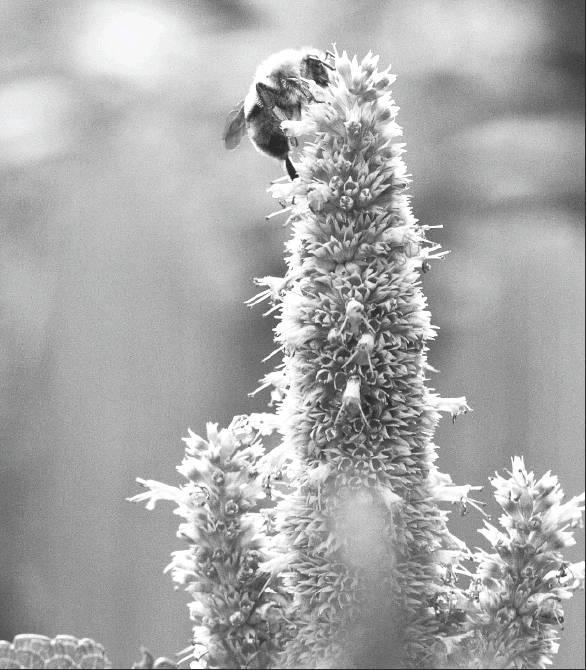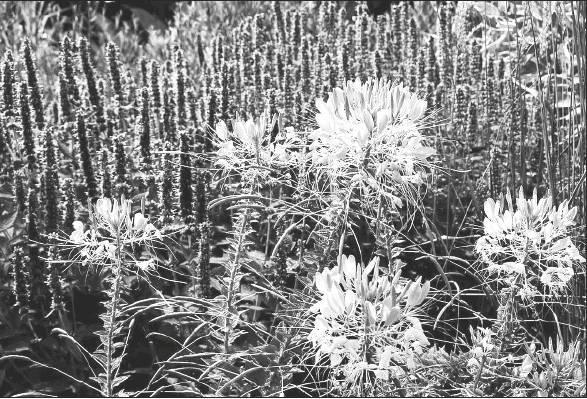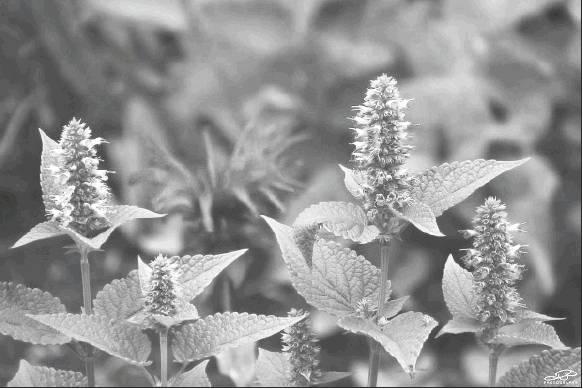Getting into Gardening
Have you ever heard of Anise Hyssop? It is a great herb that has been around for hundreds of years but has fallen out of favor in the last couple of decades. I think it is a must for you to try! You may know it by other names like Blue Giant Hyssop, Fragrant Giant Hyssop, Korean mint, hummingbird mint, Lavender Hyssop, or Anise Hyssop, but a hyssop by any other name, right? It is a rather unknown but brilliant herb that is frequently overlooked by many gardeners but is among my favorites. If you are feeling the urge for something new yet traditional in the garden then give this herb a try, it will add a bright spot of vertical color and it attracts pollinators!
While commonly called anise hyssop, the scent is more similar to French tarragon, though sweeter, with a just hint of basil. The foliage and flowers taste similar to the aroma; sweet, with the licorice of the French tarragon, and just a hint of floral undertones. It kind of sounds like I am describing a fine wine rather than a garden plant, but that is exactly how an herb connoisseur would describe this wonderful and tall garden beauty.
A member of the mint family, anise hyssop (Agastache foeniculum) is a perennial herb native to the North American prairies. It grows to three feet high in ideal conditions, although I’ve rarely seen it that tall here in central Texas. It sports numerous lavender flower spikes which appear in mid-summer and lasts until the new year.
Perfect for many practices it has been used for centuries as a substitute for French tarragon, infused in syrups and cordials, or brewed into tea, and the flowers have been used with fruit, in desserts and confections, and mixed in salads. Both the leaves and flowers make good additions to potpourri, although I don’t think I would use it for that as its benefits in tea outweigh its look on the shelf. I just love its licorice flavor, during hot summer days I look forward to brewing it into an iced tea or to just adding a few leaves of Anise Hyssop in my water as it makes a refreshing summer tonic too.
For tea, harvest leaves early in the day during a sunny, rain-free spell close to when the plants will be flowering. Then dry the leaves and store them in glass jars. Anise hyssop makes a delightfully unusual vinegar for salads and a tasty cordial if you like sweet licorice. Infused in honey it releases its anise flavor. A good friend of mine puts anise hyssop in his vodka, which he keeps in the freezer, it is his preferred libation for combating hot afternoons. The leaves are sometimes candied as a confection to be sprinkled on desserts like cakes and ice cream. My grandmother would always harvest the blossoms fresh as an edible flower addition to her salads, beverages, syrups, and desserts.
Anise hyssop grows best in areas with acid to neutral soil and regular watering. Being native to the cooler zones of North America (Zone 4-8), it will not perform as well in the hot, humid areas of the Gulf Coast. Gardeners in our parts of Texas really need to plant this in pots or raised beds with plenty of afternoon shade to help it better handle our hottest days. It is well worth the effort to grow it in your yard as it is loved by bees, butterflies, hummingbirds, lady bugs and the like. It is well behaved in the flower garden, requiring little trimming or maintenance. It is a rather compact herb, in that it doesn’t sprawl all over the place and grow in every crack like its other members of the mint family. Its growth habits are quite different. It grows nice and tall, two to three feet high and stays neatly in its growing area. Plant it where its tall stalks will contrast with low growing flowers such as petunias or marigolds.
Anise hyssop is relatively low maintenance in the herb garden. Few pests bother it although it may sometimes (but rarely) be attacked by the two-spotted cucumber beetle. I am happy to have this growing in my garden as this is one of my favorite herbs. Anise hyssop, the National Herb Society’s 2019 Herb of the Year can be a truly stunning addition to your landscape - I’m growing it in a dapple shade area paired with some pink cleome. It grows well, without many problems, which is always good. It is often a perennial herb as this member of the mint family self-seeds, another plus in my gardening book. Free plants every year, yes, that works just fine for me!
Even though it spreads via self-seeding, the self-seeders grow nearby to the original plant, not next door in the neighbor’s yard. It is upright in its growth habit and has beautiful dark green, heart shaped leaves. The adorable purple/pink flower spikes show up at the top of every stem. When cut back it easily branches and creates more spiked flowers. It starts to bloom in early August and keep going into the frost time. It can take light frosts. It is one of the easiest herbs to grow. Divide mature plants every two to three years to ensure healthy growth.
Do be aware that there is some competition with the bees, butterflies and hummingbirds for the flowers. The bees love them all the way back to the house where I have to encourage the little pollen gatherers to leave the flower and find another blossom. In the evening, I have often found bumble bees resting in the flowers and leaves for the night. During the cooler days of autumn, I have been known to accidently bring a few of the buzzing friends into the house with me. I once picked up a handful of Anise Hyssop that I cut earlier in the day, only to find that it was vibrating. Talk about opening your eyes wide in surprise, both mine and the bees!
The haunting licorice fragrance of anise hyssop is so permeating that crafters love the herb for its scent-keeping qualities and the fact that the dark purple/lavender-blue flowers keep their color even after drying. If you are looking for a nice herb for the flower garden, herb garden or potted herb on the patio, try some Anise Hyssop. Just be ready to share it with the busy bees when it is in its full blossom splendor.






